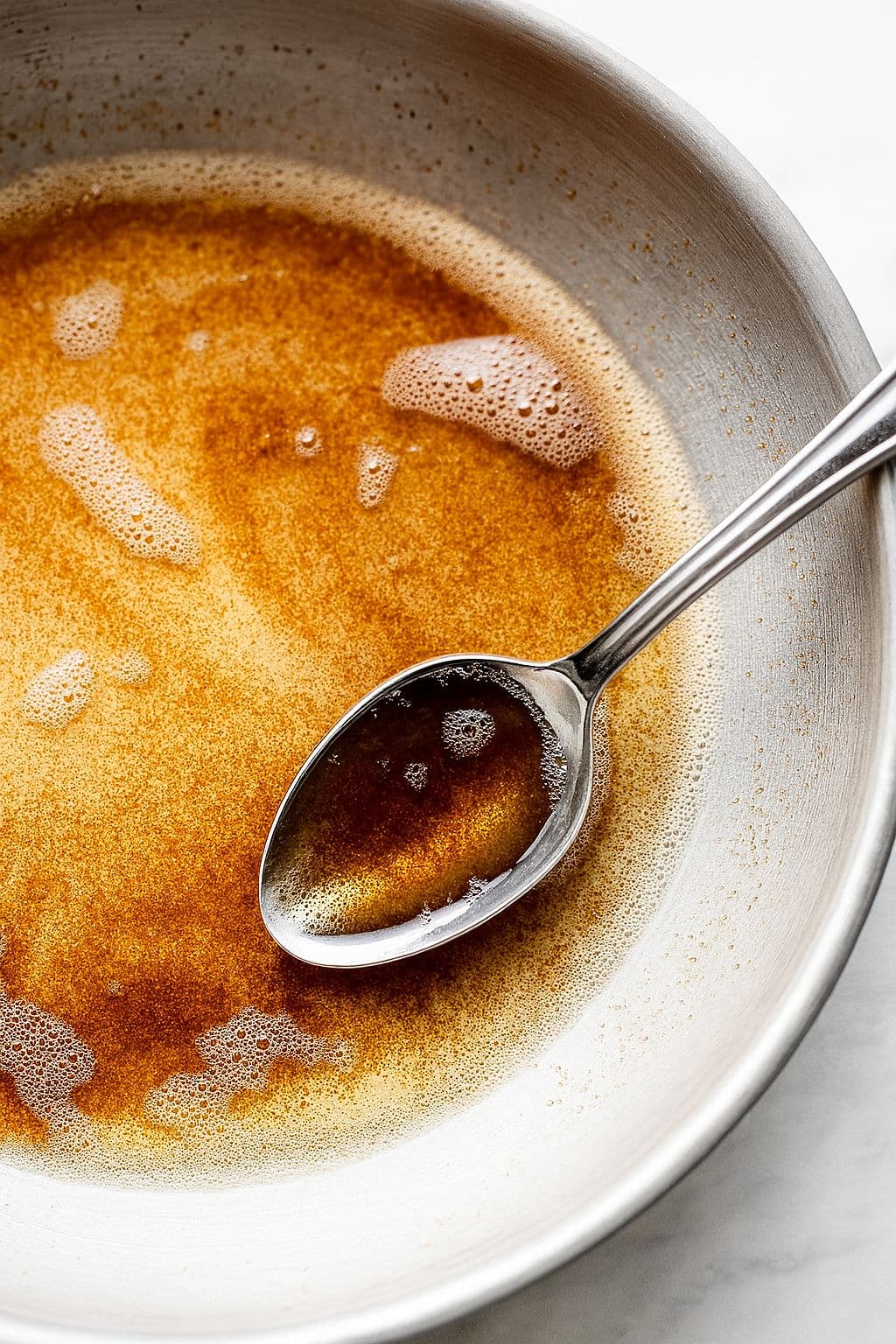The Magic of Brown Butter: Elevate Your Bakes with This One Simple Step

The Magic of Brown Butter: Elevate Your Bakes with This One Simple Step
Ever taken a bite of a cookie and thought, What is that deep, nutty flavour? It’s probably brown butter — the golden, aromatic cousin of plain butter that bakers and chefs have sworn by for centuries. With its toasted specks and rich scent, brown butter can transform everyday bakes into something truly special.
What Is Brown Butter?
Brown butter is made by melting and gently cooking regular butter until the milk solids at the bottom turn golden brown and release a rich, nutty aroma. The result is a butter with a complex flavour — warm, toasty, and slightly caramel-like.
The Origins of Brown Butter (Beurre Noisette)
Beurre noisette, which literally means “hazelnut butter”, has been part of French culinary tradition for centuries. It gets its name not because it contains hazelnuts, but because the aroma and colour of the browned milk solids resemble toasted hazelnuts.
Historically, French chefs used browned butter primarily in savoury dishes — to drizzle over fish (sole meunière), vegetables, or eggs. It became a staple in French technique-based cooking because it enhanced food with a nutty richness without overpowering it. This simplicity and depth of flavour aligned with the French philosophy of elevating ingredients through technique, not complication.
Over time, the technique crossed into pastry and baking. French pastries such as financiers and madeleines use browned butter as a key ingredient, creating that signature aroma and lightly crisp, golden crust.
As the technique spread beyond France, chefs and bakers across Europe and the United States began experimenting with brown butter in cakes, biscuits, banana bread, and sweets. In the past decade, it’s become especially popular in home baking — thanks to its ability to create bold, bakery-style flavour with minimal effort.
🇫🇷 From Classic Cuisine to Global Trend
The idea of browning butter has since travelled across cuisines. Modern bakers — especially in the US and UK — began adopting it for its intense, warm flavour, particularly in:
Chocolate chip cookies (a huge trend in the 2010s)
Blondies and brownies
Spiced quick breads and cakes
Banana bread
Frostings and glazes
Today, brown butter is considered a pro baker’s trick — a simple, elegant step that lends a recipe restaurant-quality flavour without adding extra ingredients.
Why It’s Still Loved Today
Part of brown butter’s appeal lies in its nostalgic and comforting aroma. The Maillard reaction — the same process that makes toast smell so good — creates complex flavour compounds that evoke warmth, home-baking, and depth. It’s also incredibly versatile: it adds sophistication to sweet and savoury dishes alike.
How to Make Brown Butter
Place unsalted butter in a light-coloured saucepan over medium heat.
Let it melt completely, then continue to cook, stirring gently.
The butter will foam, sizzle, and then gradually turn golden.
Watch for golden brown specks at the bottom and a nutty aroma — that’s when it’s ready.
Immediately pour it into a heatproof bowl to stop the cooking.
Tip: Use a stainless steel pan so you can see the colour change clearly. The whole process takes about 5–7 minutes.
Why Bake with Brown Butter?
Because it deepens and intensifies the flavour of your bakes — without needing extra ingredients.
Thanks to the Maillard reaction (the same one that makes toast and roasted nuts smell irresistible), brown butter develops complex flavours that ordinary butter simply can’t match. It works particularly well in recipes that already lean into warm, comforting notes — think banana bread, chocolate, nuts, spices, or caramel.
Bakes That Shine with Brown Butter
Here are some baked goods that benefit beautifully from a brown butter base:
Chocolate chip cookies
Banana bread
Blondies
Madeleines
Financiers
Brown butter icing
Walnut or pecan cakes
Spiced muffins and loaf cakes
Curious how brown butter works in a real bake? Try my Small-Batch Brown Butter Banana Bread — simple, rich, and incredibly moreish. It’s a perfect introduction to baking with browned butter, and it shows just how much depth of flavour this simple step can bring to a banana bread recipe. Get the recipe here.
Share your thoughts
Did you find this history article interesting? Rate it below and let others know!